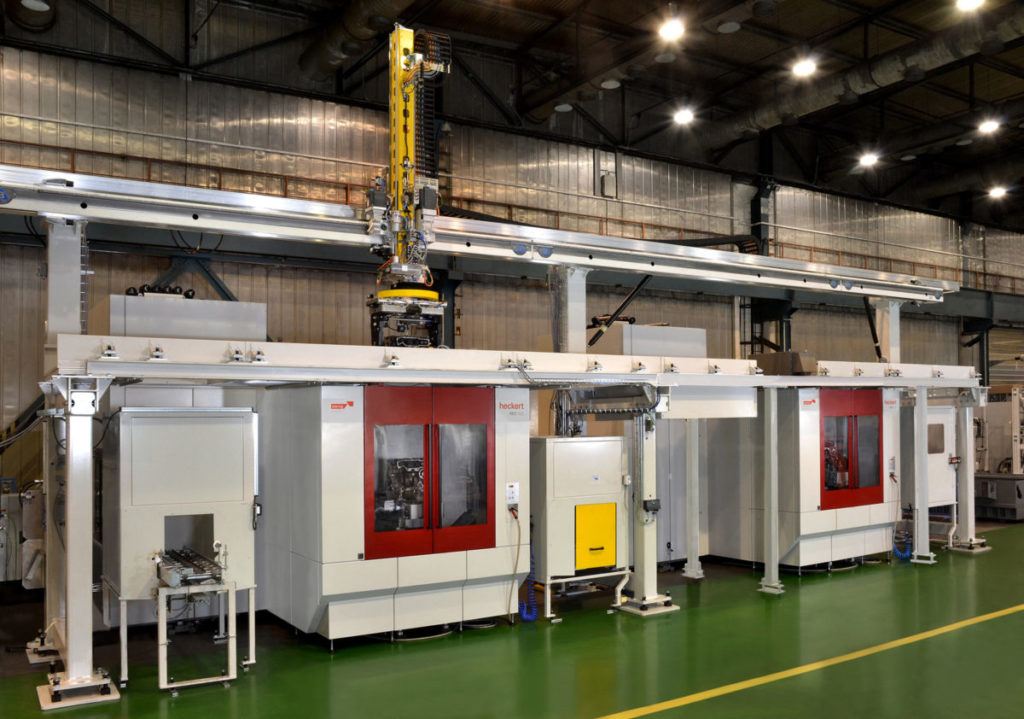Starrag Heckert H55 Machining Centre gets to grip with die forged hand tools
Estimated reading time 4 minutes

The use of a Heckert H55 machining centre from Starrag has enabled renowned hand tool manufacturer SWM to not only reduce cutting times by around 40% on certain parts, but the new-found flexibility offered by the four-axis machine is also allowing the Germany-based company to identify new machining concepts there were previously impossible.
Part of the Stahlwille Group, one of Germany’s leading hand tool manufacturers, the long-established (more than 60 years) SWM supplies all its group companies with forged parts for the production of high-quality screwdrivers and gripping tools as well as intelligent torque technology. Die forging is a particular SWM strength and the company’s reputation has always been based on expert in-house manufacturing processes using partially automated production lines.
However, SWM recently recognised the potential to optimise the production of its large pliers; machining was the weak point, the company adjudged, including its use of standardised yet complex fixturing/workholding (rather than the need to increase the level of automation with robots). Clamping of the plier heads was taking too long – as was the milling of these workpieces due to the limited spindle speed available with the existing machinery, which also severely limited product variety and made retooling very time consuming.
The way to significantly shorten the production process – to 30 seconds per plier head – and to minimise the set-up times of 26 different workpieces was, SWM discovered, to capitalise on the capabilities of a Heckert H55 machining centre boasting high levels of rigidity (and therefore accuracy), super-fast traverse rates of 80 m/min and an ability to handle loads of 800 kgs on pallets of 500 mm by 500 mm (optionally 500 mm by 630 mm).
Importantly, too, the improved machining process also depends on the company utilising in-house designed fixturing on which sometimes four different workpieces can be clamped. SWM undertook its own fixturing design because, says the company, “all the fixture manufacturers we found had little experience with forged parts and the resulting tolerances that fluctuate due to the shrinkage rates that occur during die forging”.
But why use such a high-precision machining centre on components where the tolerances are usually only a few tenths of a millimetre? In SWM’s case, machining accuracy was not the decisive factor; what is important is machine stability (for machining repeatability) and flexibility (able to easily handle a range of component types/batch sizes), as well as the need for minimal space requirements (the H55 is a compact machine occupying a floorspace of just 6.8 m by 2.9 m).
Another example of the benefits to SWM of the Heckert machine concerns certain very large parts that were previously manually machined and took half a shift. Today, because the Heckert table can easily handle the required half-tonne fixture – which can be changed in just over 30 minutes – enables the company to re-deploy the machinist formerly required.
The H55’s micron accuracy and repeatability are, however, ably illustrated by SWM’s need to machine parts on opposite sides, to be subsequently joined together. The machine’s rigid (and damped) HSK-A100 spindle is also allowing SWM to maximise the performance of its HSS profile cutters and, combined with the in-house fixturing, this means cutting speeds have been increased by around 40%. Ongoing investigations into new tooling concepts as well as the programming of ‘smart start up strategies’ are also identifying the potential for further optimised production routines.
SWM adds: “The machining centre is proving a real workhorse, allowing the company to open up countless possibilities and potentially new areas of our portfolio”. Such is the success of the Heckert H55 that the company’s exciting future is based on investing in a second identical machine.


